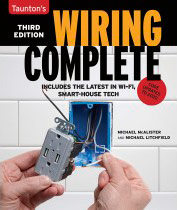Cutting Boxes into Existing Walls and Ceilings
Retrofit a cut-in box (or a pancake box) into plaster or drywall.
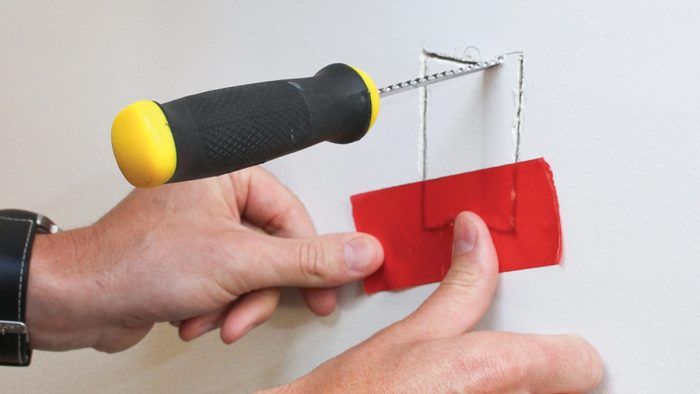
Cutting a Wall Box into Plaster
If existing house wiring is in good condition and an existing circuit has the capacity for an additional outlet, turn off the power, cut a hole in the wall, fish cable to the location, and secure a remodel box (cut-in box) to the finish surface. This process is called cutting-in or retrofitting a box, and, of course, it requires boxes with special mounting mechanisms.
Hold the new box at the same height as other outlet or switch boxes and trace its outline onto the wall. Use a stud finder or drill a small exploratory hole to locate studs or wood lath behind. Look for water pipes or other wires. If you hit a stud, move the box. If you hit lath, keep drilling small holes within the opening to find the edges of the lath. If you position the box correctly, you’ll need to remove only one or two lath sections 1.
Use a utility knife to score along the outline to minimize plaster fractures. Remove the plaster within the outline using a chisel. Then cut out the lath, using a cordless jigsaw, sabersaw, or, even better, an oscillating multi-tool with a Universal E-Cut blade 2. As you cut through the lath strip, alternate partial cuts from one side to the other to avoid cracking the plaster. Then carefully remove the plaster beneath the box ears, so they can rest on lath. Before inserting cut-in boxes, remove box knockouts, insert cable clamps, strip sheathing off the ends of incoming cable, and feed cable into the cable clamps. If more than one cable enters the box, write the destination of each on the sheathing. Secure the box by screwing its ears to the lath 3.
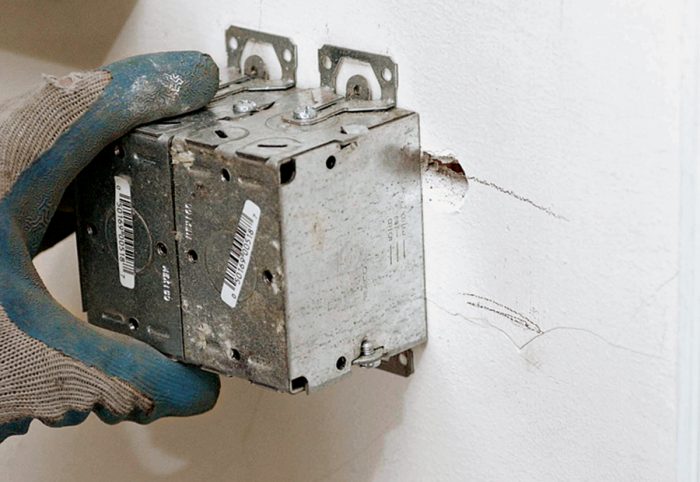

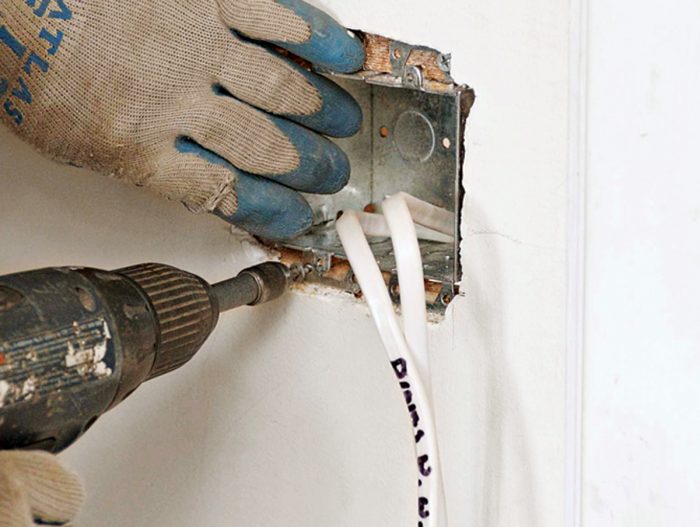
Cutting a Wall Box into Drywall
Adding a cut-in box to drywall is essentially the same as adding one to plaster. Start by drilling a small exploratory hole near the proposed box location to make sure there’s no stud in the way.
There are a number of cut-in boxes to choose from. The most common have side-mounted ears that swing out or expand as you turn their screws. Hold the box against the drywall, plumb it 1, then trace the outline of the box onto the wall 2. Align the blade of a jab saw (drywall saw) to the line you want to cut and hit the handle of the saw with the heel of your hand 3.
There is no one right way to cut out a box opening; just take it slow. If the box outline is intricate or the jab saw produces a ragged line, switch to a utility knife. If you secure the cutout with a piece of painter’s tape 4 as you finish the cut, the drywall’s paper face will be less likely to tear and the cutout won’t fall into the wall cavity—useful, should you need to patch the hole.
Run cable(s) to the new outlet, remove knockout(s) in the box, and slide the box onto the cable and into the opening 5. Code does not require that you add cable clamps for a single-gang plastic box—integral plastic clamps in the box will secure the cable.
Tighten the box mounting screws 6, which will expand side-mounted ears to extend and draw the box tight to the drywall 7.
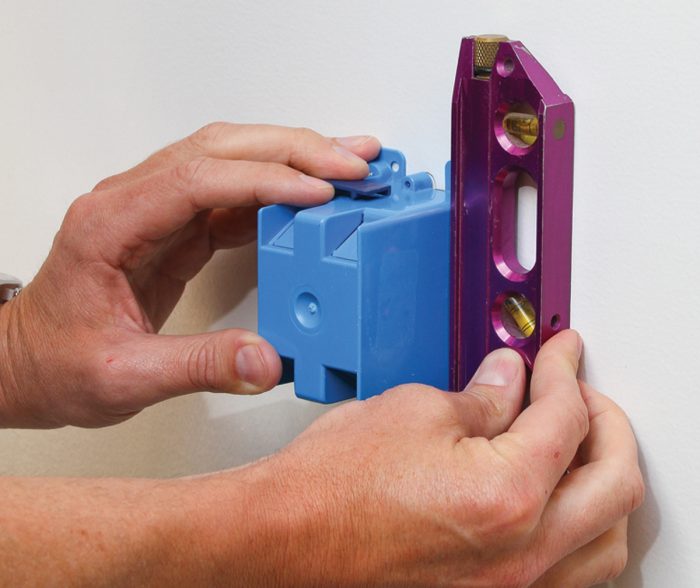
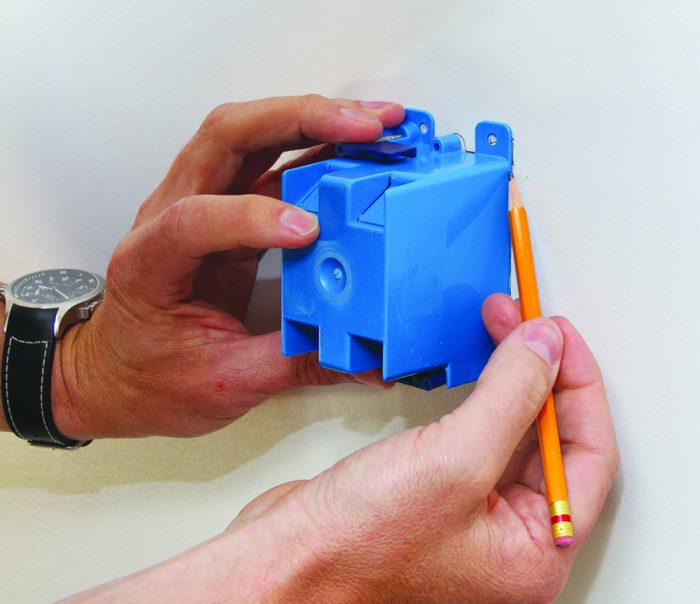

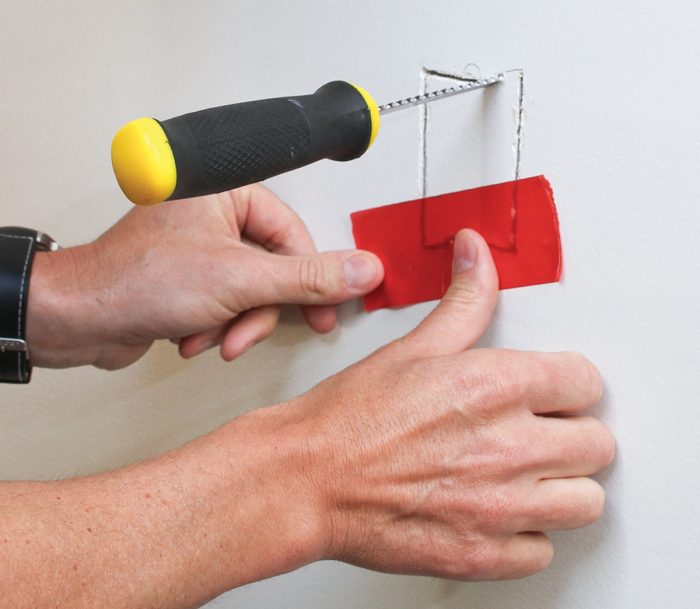

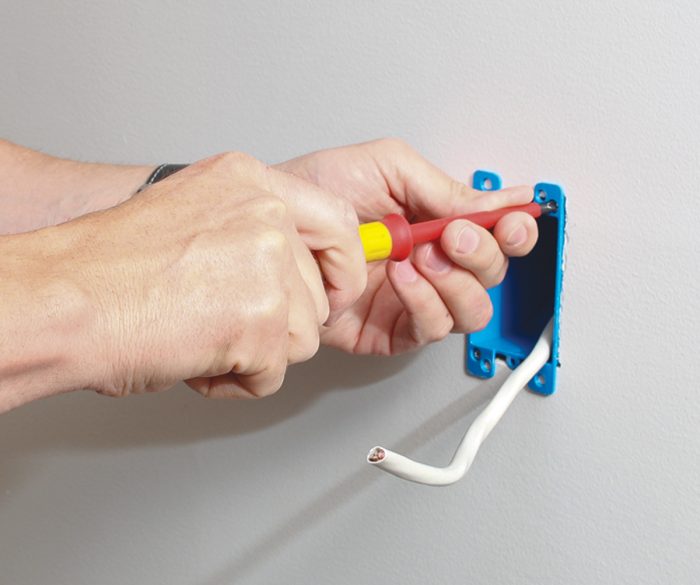
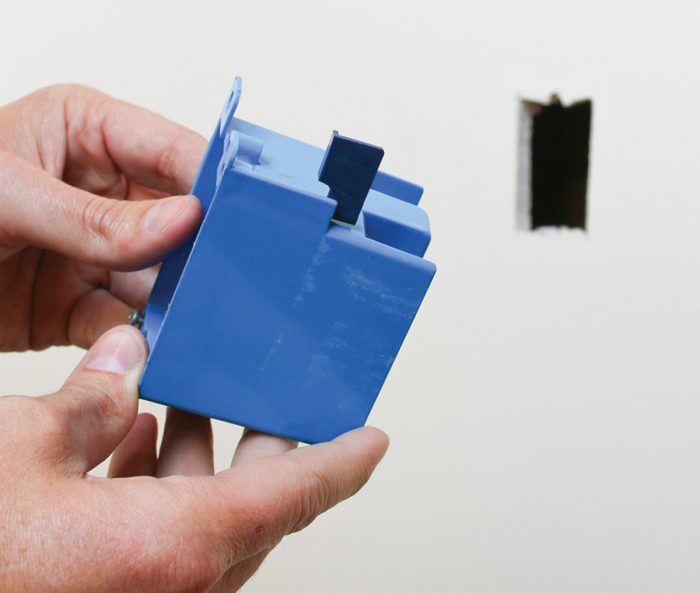
| Pro Tip: If you need to splice two or more cables, use a 4-in. octagonal or round box instead of a pancake box. |
Retrofitting a Ceiling Box
As with all retrofits, turn off power to the area and explore first. Follow the mounting recommendations for your fixture. Attach the fixture box to framing.
If there’s insulation in an attic above, remove it from the affected area. Be sure to wear eye protection and a dust mask when drilling through any ceiling—it’s a dusty job.
Mark the box location and use a fine-tooth hole saw to cut through plaster or drywall 1. Place the centering bit of the hole saw on the exact center of the box opening. Drill slowly so you don’t damage adjoining surfaces—or fall off the ladder.
If the ceiling is drywall, you’re ready to run cable through the hole in the ceiling. If the ceiling is plaster, cut through the lath or leave the lath intact and screw a pancake box through the lath and into the framing. Before attaching a pancake box, remove a knockout, test-fit the box in the hole, and trace the knockout hole onto the lath. Set the box aside and drill through the lath, creating a hole through which you can run cable 2.
Feed cable to the location and fit a cable connector into the box. Insert the cable into the connector, slide the box up to the ceiling 3, and secure it 4. Strip the cable sheathing and attach the ground wire to a ground screw in the box. Strip insulation from the wire ends and you’re ready to connect the light fixture.


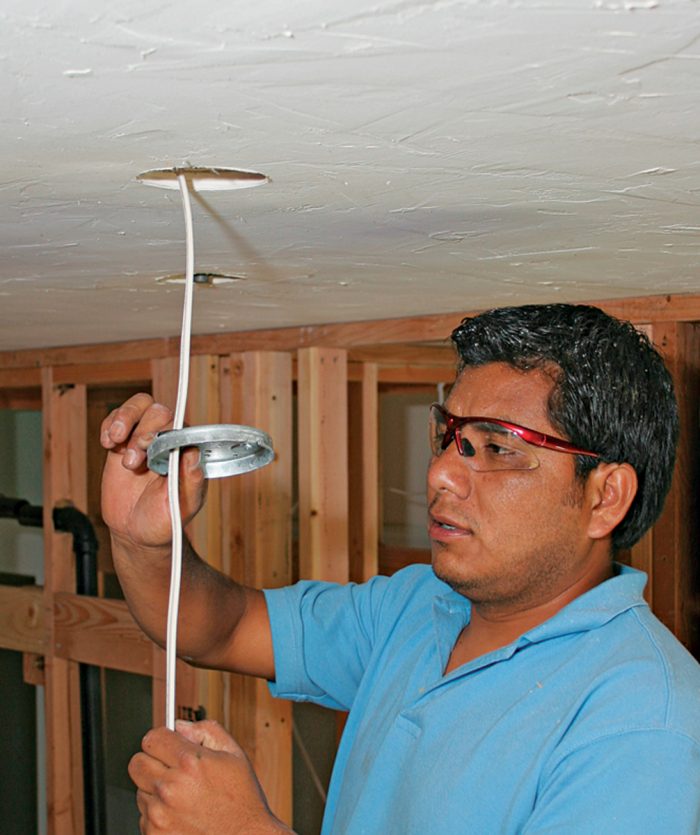
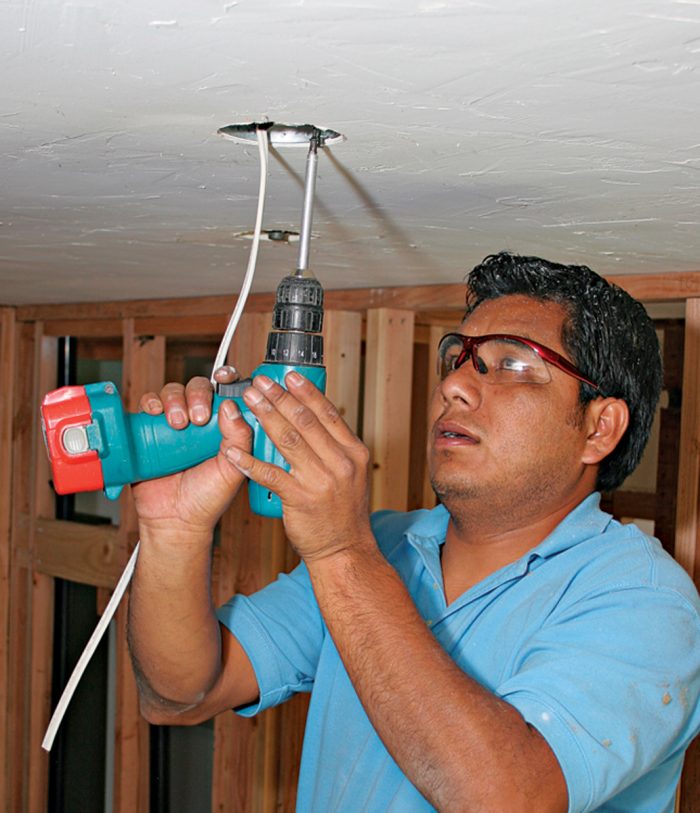
Excerpted from Wiring Complete, 3rd Edition (The Taunton Press, 2017) by Michael Litchfield and Michael McAlister
Available in the Taunton Store and at Amazon.com.

